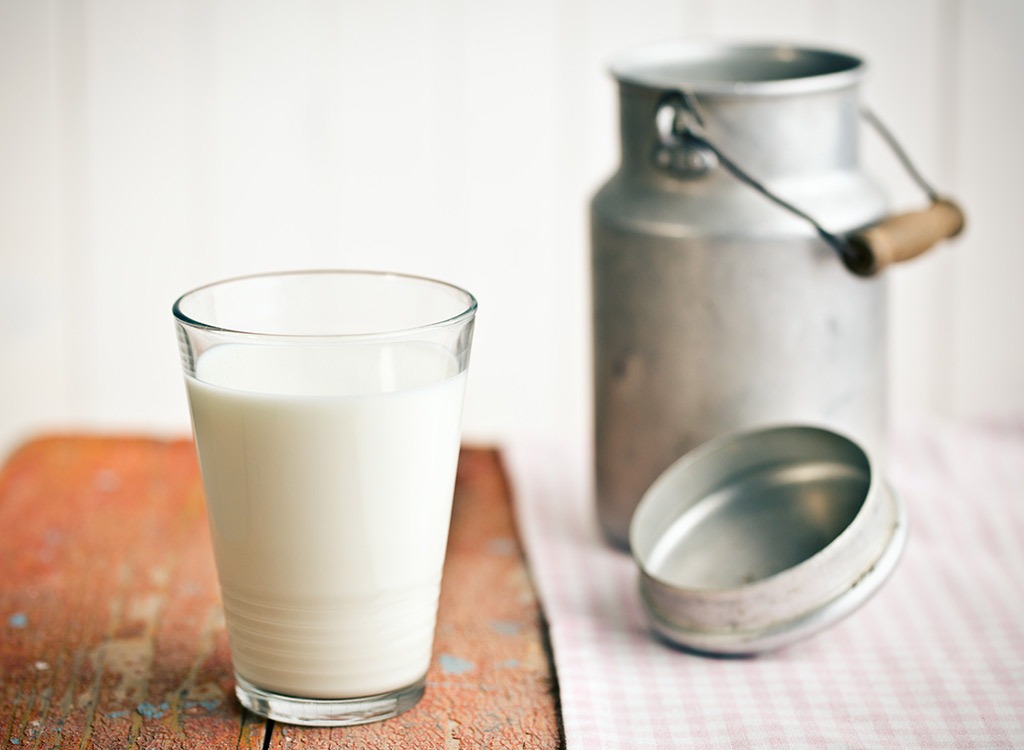The Surprising Reason Behind Milk Intolerance That Isn’t Lactose

If Mother Nature sends you uncomfortable messages every time you enjoy a bite of Brie or lick an ice cream cone, you’ve probably deduced that you’re lactose intolerant. And you’re not alone: About 65 percent of people have a reduced ability to digest lactose after infancy. However, there is another culprit in milk that may be the cause of your dairy intolerance, and it may all come down to A1 and A2 milk.
See, milk is made up of fats, vitamins, protein, and lactose—which is the naturally-occurring sugar in milk. Now, if we take a close look at the proteins in milk, you’ll find that there are two types: casein and whey. Casein protein is slower-digesting than whey, and they both pack in all nine essential amino acids. However, zoom in a bit further, and you’ll discover that there are two types of casein proteins. These beta-caseins are dubbed A1 and A2, and the cartons and jugs of milk you see at the supermarket contain a mix of both A1 and A2 caseins. We spoke to Dr. Steven Gundry, heart surgeon and author of The Plant Paradox and The Longevity Paradox, to help us delve into the differences between both beta-casein proteins and how A1 could be the root of your digestion issues.
What is the difference between A1 casein and A2 casein?
Until about 8,000 years ago, all cows made A2 casein, “which is similar to the casein in goat, sheep, water buffalo, and human milk,” Dr. Gundry tells us. “Northern European cows suffered a spontaneous genetic mutation and began making A1 casein. These cows are hardier and produce more milk, so they rapidly became the major milk producing cow in the world, including in the U.S.,” Dr. Gundry says.
How can you tell if A1 is causing your dairy intolerance rather than lactose?
“Caseins are protein, whereas lactose is a sugar,” Dr. Gundry says. “In my practice, most people who believe they are lactose intolerant are not; instead, they are intolerant to A1 casein. When we give patients A2 milk, which contains the A2 casein and lactose, they have report no ‘lactose intolerance’ symptoms!” And when Dr. Gundry switches his patients to milk from sheep, goat, water buffalo, or true A2 cow’s milk, they no longer experience abdominal pain, bloating, diarrhea, cramps, and even autoimmune diseases. These results were published in the American Heart Association’s journal, Circulation.
How can you test for A1 intolerance?
“There are a few companies that will test for this, including Vibrant America, but the easiest way to test is to eliminate American cows’ milk and cheeses and see how you and your bowels feel,” Dr. Gundry tells us.
Can I still eat dairy if I am A1-intolerant?
Yes! Folks who find out that they are, in fact, intolerant to the A1 casein can still enjoy milk and milk products—they just have to be a bit pickier when buying them. “People can use goat milk and goat yogurt, sheep milk and sheep yogurt, or buy A2 milk, which is rapidly becoming more available in major cities,” Dr. Gundry says, adding that most cheeses from Italy, France, and Switzerland are made with A2 milk, deeming those safe.








